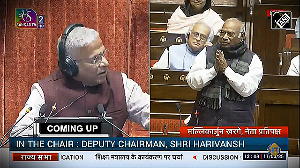After a week marked with tight liquidity and volatility in the financial markets, the Reserve Bank of India is watching how banks are deploying the funds raised through the repo window.
Sources close to the development said that the central bank was checking if banks used the liquidity adjustment facility (LAF) for raising resources to meet short-term lending needs or pay off high-cost bulk deposits.
Though it was quite difficult to pinpoint the end use of funds, the scan was a part of the regulatory monitoring to reduce prospects of directing the money for purposes other than meeting temporary cash needs, the chairman of a large public sector bank told Business Standard.
RBI sources said market monitoring was a regular regulatory activity. However, they did not elaborate the scope of the scan.
Bankers said the central bank might be worried that the steps taken by it so far had not eased the liquidity situation and that call rates remained high.
Taking note of the liquidity crunch and dollar shortage, the RBI -- on the evening of September 16 -- announced interim measures, allowing banks in dire need of funds to cut the statutory liquidity requirement (SLR) by a percentage point from the 25 per cent stipulation. In effect, it lowered the SLR level that banks have to maintain.
With over Rs 35,000 crore (Rs 350 billion) sucked out for payment of advance tax by companies, call rates touched 16 per cent on September 16. Despite the RBI's intervention, it stayed in the double-digit zone and ruled at 12 per cent for some deals on September 19. In addition, the scale of borrowings remained high with banks using LAF to borrow Rs 83,000 crore (Rs 830 billion) on September 19. The daily LAF borrowings were above Rs 50,000 crore (Rs 500 billion) on almost all days last week.
The treasury head of a private bank pointed out that with temporary easing of SLR, banks have got additional room to raise resources from the RBI and, that too, at much less cost. At present, the repo rate, or the rate at which the RBI lends to banks under the LAF window, is 9 per cent, while call rates are higher. Call rate is the indicative short-term rate for banks to borrow from each other.
According to sources, banks can lend short-term repo money for 30-60 days. However, that comes with the risk of an asset-liability mismatch as repo money has to be returned to RBI in one-two days, while a bank loan is extended for a relatively longer duration.
The other use -- paying off high-cost bulk deposits -- also comes with the same risk. Banks, however, have reduced their dependence on high-cost debt as most of them are slowing down their lending operations due to a rise in delinquency rate and lower demand owing to higher interest rates.
Still, sources said, government-owned banks also had accepted bulk deposits aggregating Rs 26,000 crore (Rs 260 billion) during May-July 2008 from public sector companies, offering 1-4 per cent higher than the card rates.






 © 2025
© 2025